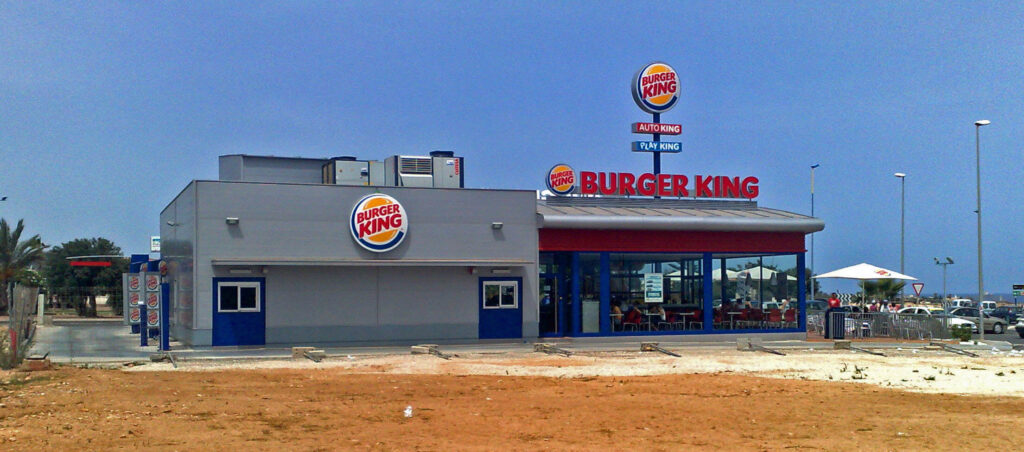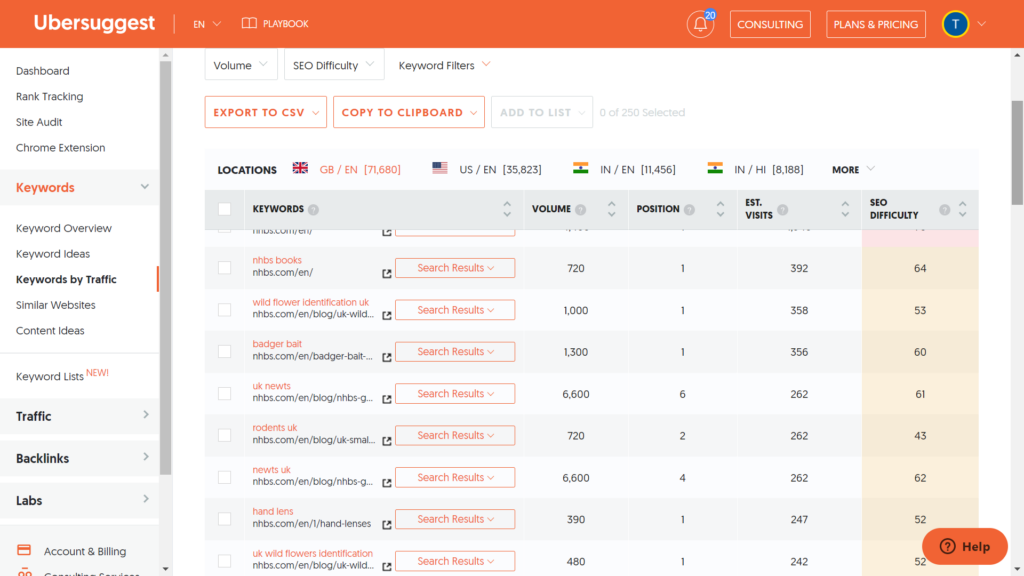The internet is packed full of information about keyword research, the art of finding practical search terms that get you visitors who want to buy.
So why would you want to read this, instead of something else?
Okay, here’s the thing. Most writing about keyword research is long-winded, jargon-filled, and written by SEOs. I’m not an SEO and don’t want to spend my life poring over boring keywords for any longer than necessary.
I want to find where are the quick wins and then get writing SEO-optimised copy.
Introducing what I call “The Burger King Keyword Research System”
Before Mcdonald’s open a new restaurant, they research everything.
They will analyse the retail trade area, which is even more complicated than you might guess. Retail trade areas are rarely geometrical, instead dictated by road networks, geography and land usage.
Then they look at demographics and footfall. Next, the boffins at McDonald’s dig deep into population size, ethnic breakdown, and expenditure potential. They look at other non-food retail businesses in the area. And they understand how far people will travel to get to a McDonald’s, in time and distance.
Finally, using computer modelling, it’s possible to forecast sales at potential new sites until they find the perfect spot.
What does Burger King do?

Burger King skips all the analysis, looks where McDonald’s has opened a new restaurant and opens a Burger King down the road to catch spill-over trade.
This is an oversimplification. But anyway, the quickest way to do keyword research is to use Burger King’s strategy. We find out where the McDonald’s of our industry gets its customers and set up shop somewhere close—figuratively speaking.
The first step for keyword research is always guesswork. With the internet, it’s not always obvious who is the McDonald’s of your market, so you need to find out.
Off the top of your head, list as many search terms you think people would use in your market. Use a pen and paper for this, unless you type faster. The idea is to be fast and loose with this.
We will try not to get tied down to anything too specific.
An example: We will do speedy keyword research for a fictional e-commerce store selling products homeowners can use to encourage wildlife. Think hedgehog highways, sturdy bird tables, bat boxes, and pollinator-friendly seed mixes.
Now we could simply enter our keywords into a keyword research tool. This would show how difficult they would be to rank, how many monthly searches they get, which sites are winning on Google, and how many incoming links the successful pages have.
But if we do that, it’s easy to start fixating on our first keyword ideas, and there will be many more opportunities.
So rather than use any SEO tools for the moment, let’s go straight to Google and ask these queries.
We do this to get the lay of the land.
We’ll find out how crowded the market is, who’s paying for advertising, who’s making the popular videos, and what the Related Searches are.
Most importantly, we see who the heavy-hitters are. The McDonald’s to our Burger King, if you will.
Next, we’ll run some of the domains we found on Google through a Keyword Research Tool. The tool I’ve chosen to use is Ubersuggest since it’s affordable, user-friendly, and has a free version you can use. SEM Rush is the gold standard of SEO tools, but I suspect readers who don’t regularly do keyword research may baulk at the idea of a $99 monthly fee.
Here are a few examples of sites that are doing rather well in my niche.


Researching the competition: NHBS.com

Let’s get started with researching what keywords NHBS has managed to rank.

So let’s see what they rank for:

Exporting Keyword Research Competitive Intelligence to Excel
Here’s how I sorted through the keywords:
- Apply filter
- Sort by search volume
- Apply number filter to keyword difficulty. I selected Less Than 60.
- Manually looked through keywords with more than 200 searches per month. It seems low, but good content will pick up more traffic from related searches.
- Colour the cells with search terms that I like.
- Filter by colour.
That leaves me with this:

As I say, my fictitious new store’s website is brand new, so it will struggle with popular keywords.
So we’re now getting a good idea of popular products to sell, but it might be too challenging to rank product pages on a brand new website.
For that reason, finally, we’ll look at what keywords would be ideal for content marketing.
I liked the idea of bat detectors, as they are an ideal price point for me. So now I pop my new keyword bat detector back into Ubersuggest to see related keywords.
My favourite related keyword is best bat detectors for beginners. It gets a low 90 searches per month and is moderately competitive. But it has definite commercial intent, and the price of even an entry-level bat detector makes this worth my while. (Wondering what I mean by commercial intent? Moz.com gives a pretty good explanation of the different types of search intent.)
Rinse & repeat with the rest of the competition
After further keyword research using my competition’s traffic, I found a rich seam of content marketing keywords on HomeandRoost.co.uk
Using the same process, I found keywords like what do robins eat, with 3,600 searches per month. This is a keyword with Informational Intent, meaning the searcher is primarily looking for information. But it has commercial possibilities. The searcher has a robin in her garden and wants to know what they eat. We answer her question helpfully, with SEO content writing, but we can definitely also use this content to soft-sell our birdseed, a feeder, or a birdtable at this point.
Another example: 1,600 people a month in the UK ask Google what does hedgehog poop look like. Many people asking this have probably seen some animal droppings in their garden and wonder if they have hedgehogs visiting at night. Since most people find hedgehogs cute – What sort of a monster would hate hedgehogs? – it’s a reasonable assumption they hope they do have hedgehogs visiting their garden. And do you think they might want to buy some of our hedgehog-related wares? I’ve got some hedgehog houses, hedgehog feeding stations, calci worms for hedgehogs, and even hedgehog highway signs in stock right now.

Likewise, the person asking do hedgehogs eat slugs is almost certainly a gardener, who would probably like to encourage hedgehogs, and avoid using harmful slug pellets.
I won’t bore you with the myriad of keywords I found, but there were many.
Anyway, if you think laterally, keywords with Informational Intent are a superb basis for content writing that sells.
So there you have it. In less than 30 minutes, we’ve discovered enough in-demand products within our niche to stock a small e-commerce site and their keywords and search volume. Not only that, but we’ve also managed to uncover enough informational keywords to sustain a content marketing strategy for several weeks.
All you have to do now is write your SEO content. Do you need assistance? I can help with both keyword research and writing for search engines.

Leave a Reply